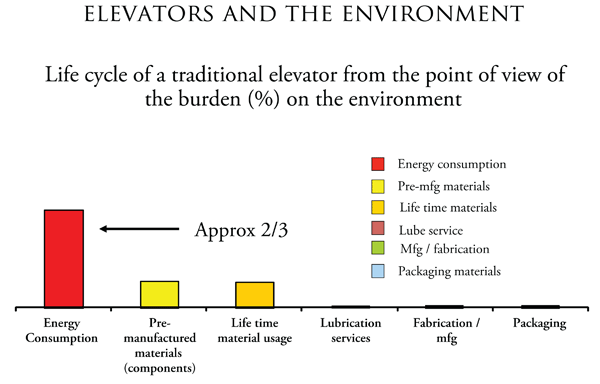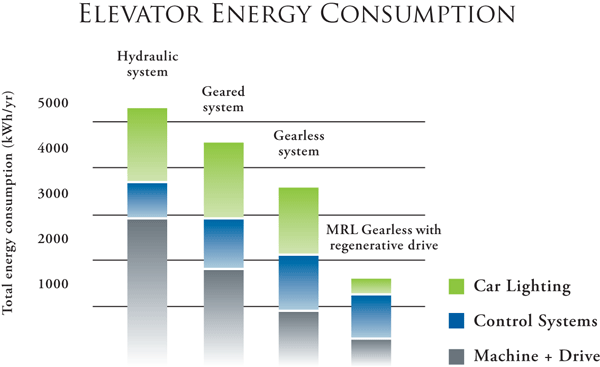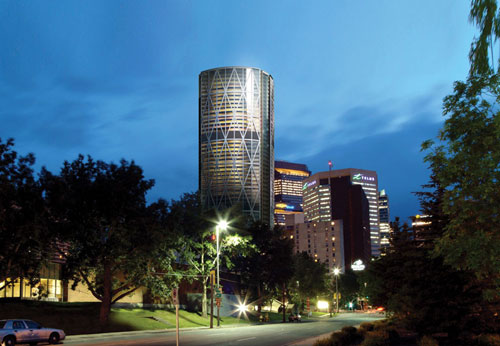Next Generation Machine-Roomless Elevators
LED Lighting
LED lighting is another green feature with numerous benefits. LED lights are highly efficient and last up to 10 times longer than conventional fluorescent lamps, thereby reducing energy consumption. As they don't burn out and need replacement as frequently, LED lights also require less building maintenance. They also stay cooler than fluorescent lights, which means they use less energy to keep the cab cool.
Sleep Mode
Some elevator systems incorporate a “sleep mode” where car lights and fans are shut down when the system is not in use, eliminating the need to generate unnecessary power. When a passenger pushes a call button, the elevator instantly springs back to life. Sleep mode further enhances LED lighting. Used in conjunction with such an auto-shutoff mode, LED lighting becomes up to 80 percent more energy efficient than conventional lighting.
Both true MRL holeless hydraulic and gearless traction models can be equipped with LED lighting and sleep mode, features estimated to reduce annual energy consumption per kilowatt hour by nearly half. Architects should note whether these energy-saving features are standard on the model they are specifying.
Energy Efficiency: Why It’s Important
Industry engineers have concluded that, over a 20-year elevator life span, energy consumption has the greatest impact on the environment. In fact, two-thirds of the burden is from the energy it takes to power the elevator system over that 20-year period. Findings are for a traditional traction system.
Green features previously discussed — permanent magnet machines, coated-steel belts, regenerative drives, LED lighting, and sleep mode — offer real opportunities to reduce these operating costs and deliver environmentally sound performance. As indicated in the accompanying chart, incorporating these green options into an elevator design can have a dramatic impact on a building's energy bill. The total energy consumption for a gearless MRL is significantly lower than the hydraulic, geared, and gearless systems. The green, gearless MRL uses less than 2,000 kWh/yr versus the hydraulic which uses over 5,000 kWh/yr. Even the next best option after the MRL, the gearless system, uses approximately 3,500 kWh/yr.
How MRLs Stack Up in Terms of Energy Consumption
Due to several elements in its design, a permanent magnet gearless system with regenerative drive is up to 75 percent more efficient than either conventional hydraulic or traction elevators. The smaller sheaves, gearless design, and coated steel belts result in a better option for building owners interested in saving energy.
In another measure of sustainability, standards published by the Association of German Engineers, Verein Deutscher Ingenirure (VDI), known as VDI 4707 standards, assess elevator energy performance based on factors such as load, speed, frequency of use, and travel height, during both travel and standby modes. An elevator's energy demand is rated using seven different classes from A to G, where A reflects the highest rating possible (the least energy used) and G the lowest rating (the most energy used). VDI measures energy efficiency based on usage category on a scale from 1 to 5, where 1 represents low-use systems and 5 represents high-use elevators. Measurements taken on gearless MRL installations with regenerative drive configurations earned the highest efficiency class rating.
 |
|
Chart courtesy of Otis Elevator Company |
 |
Chart courtesy of Otis Elevator Company |










